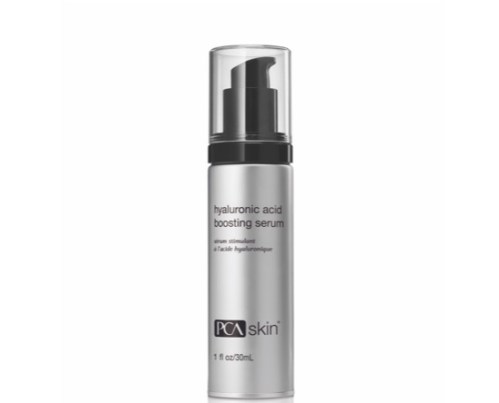The Most Important Thing to Look for in a Hyaluronic Acid Serum to Keep Skin Hydrated
Scientifically, the molecule of hyaluronic acid is known for holding 1000 times its weight in water, making it a humectant that's always pulling in moisture to deliver it straight into your skin. But as I’ve been applying the hydrating MVP to my face for several years now, I’ve started to notice that many bottles of the stuff say they contain different "molecular weights" of the ingredient. And if you need Bill Nye to explain what the heck that means, you're not alone. I did, too.
The down-low is this: The molecule sizes of different hyaluronic acids vary from bigger molecules that sit closer to the skin's surface to smaller ones that go in deeper into the epidermis. “For a hyaluronan serum to deliver both instant and long-lasting effects, you need a combination of molecular weights,” says Jeremy Muijs, co-founder of skin-care brand Grown Alchemist. "Low- and medium-weight hyaluronan molecules penetrate deeper into the skin's structure, providing maximum below-the-surface hydration and in turn rehydrating skin cells over time. High-weight hyaluronan molecules deliver immediate intensive hydration to the surface layers of the skin for an instant smoothing and firming effect."
{{post.sponsorText}}
You might remember that our skin actually contains hyaluronic acid itself, and so this bottling of multi-weight molecules in many ways mimics what's going on in skin. "Hyaluronic acid is found naturally at a high molecular weight in our tissue, but it can be broken down and found as a low molecular weight as well," says Rachel Nazarian, MD, a board-certified dermatologist with New York's Schweiger Dermatology Group. "The different weights may signal different cellular responses in the skin, triggering different pathways of healing and repair mechanisms, but they also have varying levels of penetration into the skin. The thought is that perhaps using a combination of molecular weights will trigger different complementary pathways and will lead to even better results than just high molecular weight alone." It's important to note that no matter the molecular weight of the serum you're using, it's all working on the top layer of the skin known as the epidermis, according to the cosmetic chemistry blog Lab Muffin.
Not all of the hyaluronic acid serums out there actually say the molecular weight they're using, but plenty will now tip you off to the fact that they use a variety of molecular weights of the ingredient—which is what you should look for. "I do think this is a trend that we should be looking for in the future," shares Dr. Nazarian. I will say that the multi-weight hyaluronic acid serums that I've tried definitely provide some longer-lasting results—so let that hold as much weight (ahem) in your shopping as you'd like.
Shop multi-weight hyaluronic acid products
To top off all that hydration, also wipe on one of these dry skin moisturizers. And here's why dry skin isn't the same as dehydrated skin.
Loading More Posts...





